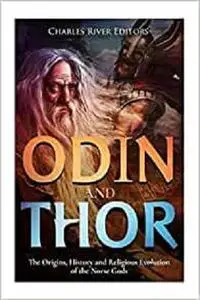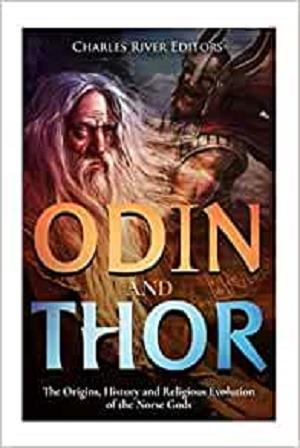Odin and Thor: The Origins, History and Religious Evolution of the Norse Gods by Charles River Editors
English | August 26, 2013 | ISBN: 1492252069 | 73 pages | EPUB | 2.23 Mb
English | August 26, 2013 | ISBN: 1492252069 | 73 pages | EPUB | 2.23 Mb
*Includes pictures of important places and historic illustrations and art depicting the gods and other important Norse figures.
*Explains the historical origins of the gods, the mythological tales about them, and the religious and literary evolution of them.
*Includes a Bibliography for further reading.
*Includes a Table of Contents.
“In swelling rage | then rose up Thor,–
Seldom he sits | when he such things hears,–
And the oaths were broken, | the words and bonds,
The mighty pledges | between them made.” - Völuspá Line #26 from the Poetic Edda
A hammer no mortal can lift. A flame-haired fiery storm god. A comic book alien-hero-god who defends humanity. The swastika. Even the name "Thursday" ("Thor's Day"). Despite the virtual disappearance of the indigenous Norse religion and mythology several centuries ago, modern society still regularly encounters the storm god Thor, who continues to be brought back to life in the form of literature and was recently the protagonist in a big-budget Hollywood movie. What is it about this god, out of the hundreds (if not thousands) of deities that were consigned to the dustbin of history by the world’s major religions, that so captures people’s imaginations today?
A better understanding of Thor’s appeal can be found in just about every aspect of the history and evolution of the figure over the centuries, including the origins of the god, the evocative imagery used to describe him, and even the parallels between Thor and similar gods and heroes. All of this has been buffeted by literature, such as the stories about Thor found in the Prose Edda and the Poetic Edda, and the connection societies have had with Thor for hundreds of years, even up until today. This work also examines the decline and displacement of Norse mythology by Christianity, the reasons why Thor was often the last god worshiped by the Norse, and today’s remnants of Thorism, including his parallels in other faiths, his role in revived Neo-Heathenism and his appearance in other media as a hero in comics and films.
Thor's popularity has historically been rivaled only by his father Odin. A one-eyed old man, with a gray cloak and a wide-brimmed hat leaning on a staff. A wanderer who appears when least expected, bringing triumph or doom. The god of prophecy, poetry and fate. A shapechanger. A sorcerer. The god Odin cuts a dramatic figure in Norse mythology and is still a part of the popular imagination. He is the inspiration for figures like J.R.R. Tolkien's Gandalf the Grey, and he still appears in modern literature as varied as Marvel Comics and Neil Gaiman's novel American Gods (2001).
Alongside Thor, Odin is one of the best known Norse gods, and it’s often easy to forget that he was once at the heart of a pantheon devoutly worshiped by millions of Europeans in the Middle Ages. Odin has numerous names and titles (over 200 by one account), but his best known title is "The All-Father," the co-creator of Earth ("Midgard"), humanity and all of the creatures that inhabitant this world. He is also, importantly, the god of prophecy, ecstasy, and poetry, all roles that were closely connected in the Norse world.
Feel Free to contact me for book requests, informations or feedbacks.
Without You And Your Support We Can’t Continue
Thanks For Buying Premium From My Links For Support
Without You And Your Support We Can’t Continue
Thanks For Buying Premium From My Links For Support



